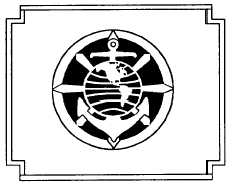HISTORY OF THE RP RATING
The idea of having a chaplain’s specialist assigned
to each ship with a chaplain aboard dates from 1878.
That year a committee of chaplains first made the
recommendation to the Navy Department. Although the
Navy Department did not immediately adopt the
recommendation, successive generations of chaplains
gave their support to the idea.
ESTABLISHING A SPECIALTY
In 1942, the Navy Department took the first steps to
establish a Specialist (W) rating to help Navy chaplains.
Originally, the Navy Department decided that rating
should remain in effect only for the duration of World
War II. The (W) specifically referred to welfare. In
February 1942, before the Navy Department had even
taken action on the Specialist (W) rating, the Marine
Corps established a Military Occupational Specialty
(MOS) known as Chaplain’s Assistant. Unlike the Navy
who started the Specialist (W) rating only as a wartime
measure, the Marine Corps announced that it intended
to keep its specialty of Chaplain’s Assistant after the war.
To qualify for the Navy’s Specialist (W) rating, an
applicant had to be able to play the piano and organ for
religious services and other gatherings and be a
competent choir director. Consequently, most
applicants for Specialist (W) had backgrounds as music
teachers, professional musicians, or church ministers of
music. The 8-week indoctrination course in Specialist
(W) training at the Navy chaplain’s school included
instruction in naval etiquette, naval correspondence,
clerical procedures, choir organization, rehearsal
procedures, Navy Relief, sacred music for divine
services (Protestant, Roman Catholic, and Jewish),
military weddings, military funerals, and the practical
application of shorthand and typing.
In April 1948, the Navy established the Personnel
Man rating. Included in the job classification for this
rating was Chaplain’s Assistant. From 1945 to 1979, the
Yeoman rating furnished personnel in the Chaplain’s
Clerk specialty (YN 2525) to aide and support Navy
chaplains in their efforts to provide quality ministry.
Before a Yeoman could be assigned to a chaplain,
however, the command chaplain had to go through the
lengthy and time-consuming process of justifying the
need for a YN 2525 billet. Often, the chaplain’s office
was in direct competition with other command
departments for the services of Yeoman personnel.
Frequently, the chaplain’s office had to accept
unqualified personnel as a temporary solution to the
command’s manning problems. As a result, the
establishment of a permanent rating to support the
Navy’s chaplains remained a primary goal of the Chief
of Chaplains.
ESTABLISHING THE RATING
In 1979, the Secretary of the Navy approved the
establishment of the RP rating. Stringent selection
requirements were set. To request a lateral conversion
from another rating to the RP rating, the applicant was
required to undergo an interview and obtain a
recommendation from a Navy chaplain. A commanding
officer would recommend a prospective candidate for
the RP rating based on several factors, including the
chaplain’s endorsement.
In May 1979, the Chief of Naval Operations (CNO)
approved the insignia for the RP rating. The RP rating
insignia (fig. 1) consists of a rose compass, a globe, and
an anchor. The rose compass represents the direction
that religion gives to life; the globe indicates that RPs
serve throughout the world; and the anchor represents
each RP’s tie to the sea services.
DUTIES AND RESPONSIBILITIES
The duties and responsibilities of the RP rating
include a variety of tasks. To prepare successfully for
Religious Program Specialist third class, you must
realize that you will be accountable for carrying out a
variety of tasks in the following fundamental areas:
l Religious Program Support
l Religious Education
l Religious Offering Fund
. Library
Figure 1.—RP rating insignia.
x

